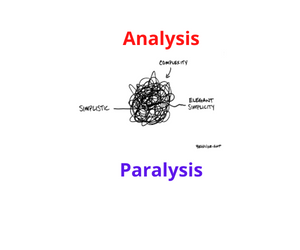Banks are pretty low in the publics estimation. Of late, Sod’s law has applied in spades. What can go wrong has gone wrong; Nasdaq and the Facebook problem, RBS and their domestic banking problems. On top of that, banks have made a big mess of many basic things they should be getting right; rigging LIBOR, or at least apparently trying to, is the most appalling breach of trust, as are the client money problems at MF Global and Peregrine. If there is a way to do it wrong or badly, it seems the banks have found it.
A very recent experience reminded me that we bankers are often our own worst enemies, doing things the complicated way.
Clearing is the topic du jour. In some asset classes, it has been a feature for a while, even if not ubiquitous. In the world of FX, it is a new feature, so suddenly there are trade messages that need to boldly go where no FX message has gone before. That means systems need changing. At the starting point of a project, you will know something about the “what”, as in the outline of the goal you need to meet. Next is to work out where to both “where” and “how” to apply the screwdriver. The “where” can be an interesting process. You will already have your goal in mind and be thinking about how to get there. No doubt, keeping things as simple as possible is in your mind. You will know the main systems involved, then somebody says: “But what those other folk in Equities in New York, Asia, wherever, they use the same product and book directly to their own systems when they face the street.” “Really, you ask, why do equities need to face the street in the interbank market for FX?” The explanation in this case, and similar ones, is often straightforward: “They don’t like the prices from FX and want to do their own thing.”
In the past, this complication has been allowed to happen and actually today your business is carrying the load of that complexity. Somewhere in your shop there is a small amount of trade volume being processed in something other than your primary system. Small volume but high touch handling as a rule. Somebody is putting up with this sore thumb everyday. Now comes the moment of truth. Do you include this special processing in the scope of the project or work to stop it happening? Many times, people will put up with the complexity, “Love All, Serve All,” as they say in the Hard Rock Cafe. Actually, this is the wrong thing to do. If you have more than one system for end-to-end processing for a product or asset class, you will build a rod for your own back and those of your successors. One street facing process has to be the rule. Internal trades to move risk between books or systems by all means, but not multiple systems facing out. This may mean you have to tell your Equities team they have to trade with the FX desk. This will bring howls of protest, about how they always get ripped off, bad service yadda, yadda, yadda. You will be challenged.
That lesson is recent and quite narrowly focussed. “We don’t do FX” you might say, “what has that got to do with us?” The point is that at the latest when it is time to change the technology, you have a chance to take stock of how you are set-up and eliminate any duplicate channels. This chance presents itself in both small or narrow settings, like the one above, or in great big bank wide situations.
About a decade ago, SWIFT decided that it was time for a big change. Not just the annual release, but a a move to a brand new messaging protocol. I think X25 was the old standard and IP the new one. Matters not, it was big. So with the goal fairly clear and some mandatory change in sight, at Credit Suisse we had to figure out the “where” part of the project. Where in the bank, globally, were there SWIFT installations that needed changing. A quick bit of research later we found the firm owned some 90 or so active BIC’s, i.e. the unique identifier for a bank or its related group companies. These 90 BIC’s were spread across no fewer than 29 different SWIFT installations around the globe. Every one of them was creating very little noise on a day-to-day basis, many of them were inherited thru acquisition. We did some quick math; each installation would require a minimum amount of work, which we estimated was four many years or about USD 1 million on a fully loaded cost basis. So we were looking at costs of at least USD 29 million just to “keep up”. not to make a penny more in revenues, but just to be able to operate. We pretty quickly found out that there was technology available to simply have two hubs to let the spokes feed into. Our recommendation to the Steering Committee was an easy sell; by centralisation we could slim the whole thing down to 2 main connections and projects and 27 small, adjustment projects.
Lessons Learned: The point of a big change is a wonderous moment. This is the only time when you should make like President, or Prime Minister Putin in Russia. Diktat. Say no and tell those involved that any inter-divisional price and service issues should get sorted out in the CEO’s office. Gloves off if need be, but certainly any front-office inability to act rationally should not spill over to your world. Cut out the complexity. As one smart person at the old CSFB put it rather succinctly; entropy kills
A personal request: Comments and feedback from regular readers are very welcome. If you find this Blog useful, please subscribe. There is an E-Mail tool and an RSS link on the right hand side of the main Blog page. If you like it enough to share, please share this with a friend or two and ask them to subscribe too. If I am wide of the mark and not offering anything of use, please comment or contact me directly via E-Mail.
Share on:



